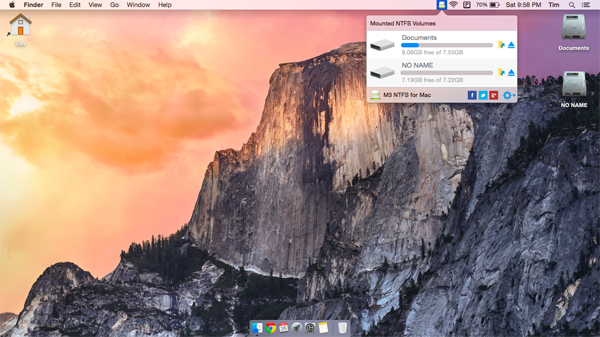Windows uses the for its hard drives. Mac OS X can read files on NTFS hard drives, but it can't write files to them, which is a glaring omission.
Free Ntfs Support For Mac
Attempting to drag a file into an NTFS drive in Mac OS X will only result in your mouse cursor turning into an error sign. Since many Hackintoshes, being unable to share files between hard drives can lead to a lot of problems with file management. Fortunately, you can enable NTFS writing on OS X with relatively little trouble- all it takes is a few drivers and 10 minutes of your time. This mini-guide merely repeats what we said in our, from back in 2012. Of course, a bit has changed since then. Nowadays, you can actually just skip third-party drivers altogether by instead.
Despite these developments, however, we still recommend that you follow this guide and install third-party drivers anyways. It's simpler, and you don't need to use Terminal. (Here at MacBreaker, we have a policy of avoiding the use of Terminal whenever possible.) This solution is compatible with every version of Mac OS X since Snow Leopard, including Lion, Mountain Lion, Mavericks, Yosemite, and even El Capitan. UPDATE (October 9, 2015): Yes, this still works on OS X El Capitan! You may have to update OSXFuse, but that's it. UPDATE (September 12, 2014): has combined the 3 separate drivers listed in this guide into a single, which is quicker and easier to install. However, the download process on Niresh's website is a bit convoluted, so it's up to you whether you want to try his new driver package, or just stick to the current method detailed in this guide (either way, the results are the same).


Install FUSE for OS X Download and install OSXFUSE on your computer. While it won't enable NTFS write in Mac OS X by itself, FUSE is a necessary 'building block' for pretty much any Mac driver that deals with third-party file systems (including the NTFS file system). Back in the days of Mac OS X Snow Leopard, you could simply install this driver by itself (along with MacFUSE, the predecessor to OSXFUSE), and then Mac OS X would have NTFS writing capabilities automatically. Unfortunately, development of NTFS-3G has since stopped, which is why we need to do a bit of extra work to make everything run right. Install fuse-wait The first time you boot into Mac OS X after installing NTFS-3G, you'll probably be bombarded with error messages about your hard drives. Technically, this means that NTFS-3G is working correctly; you should now be able to write files onto your NTFS drives in Mac OS X. However, you'll probably want to get rid of these annoying error messages.
Does Mac Read Ntfs Drives
To do that, download and install the fusewait patch for NTFS-3G.